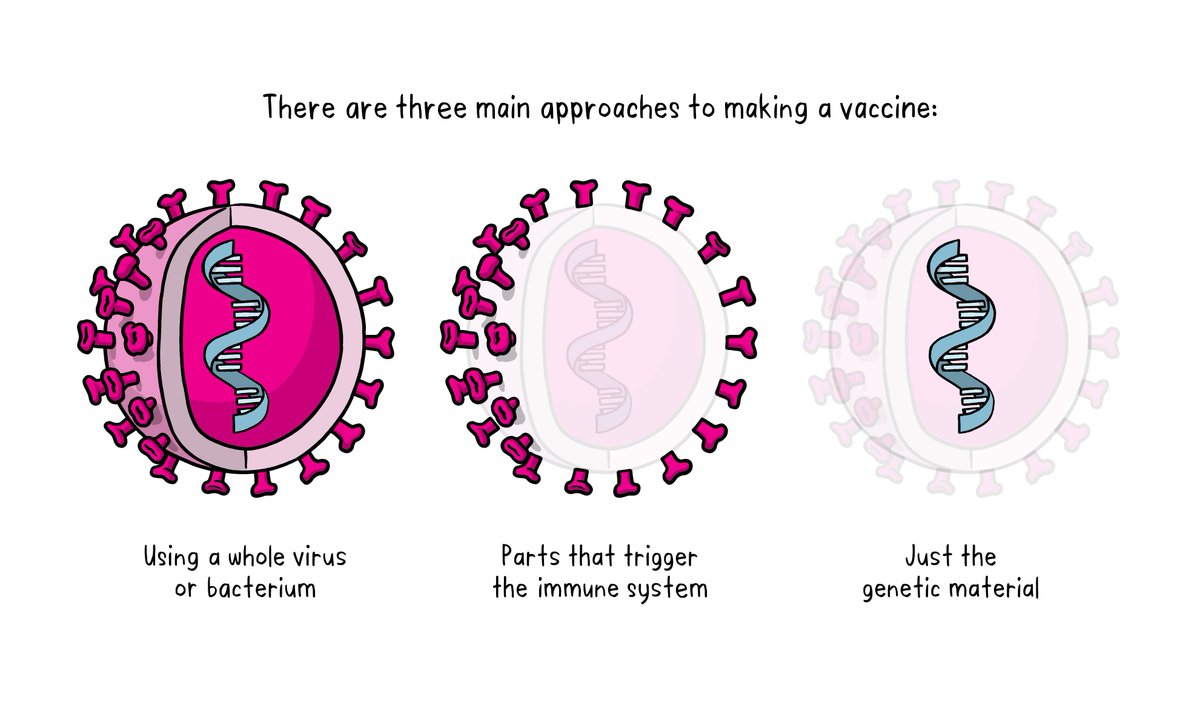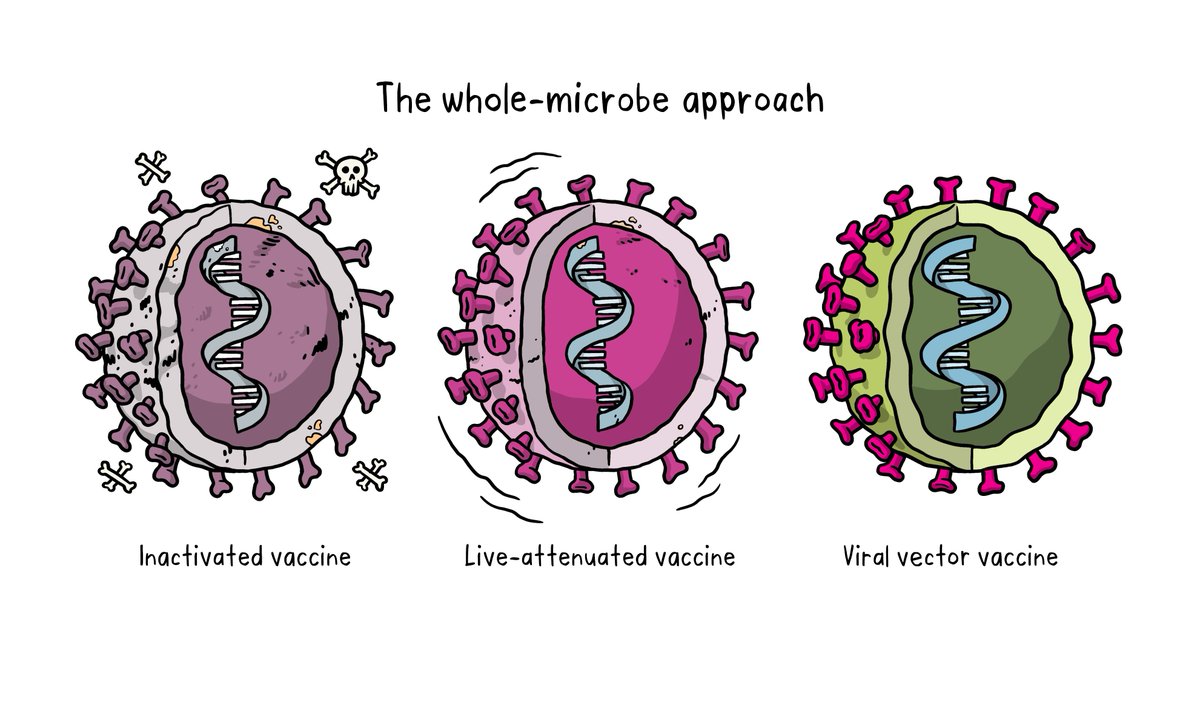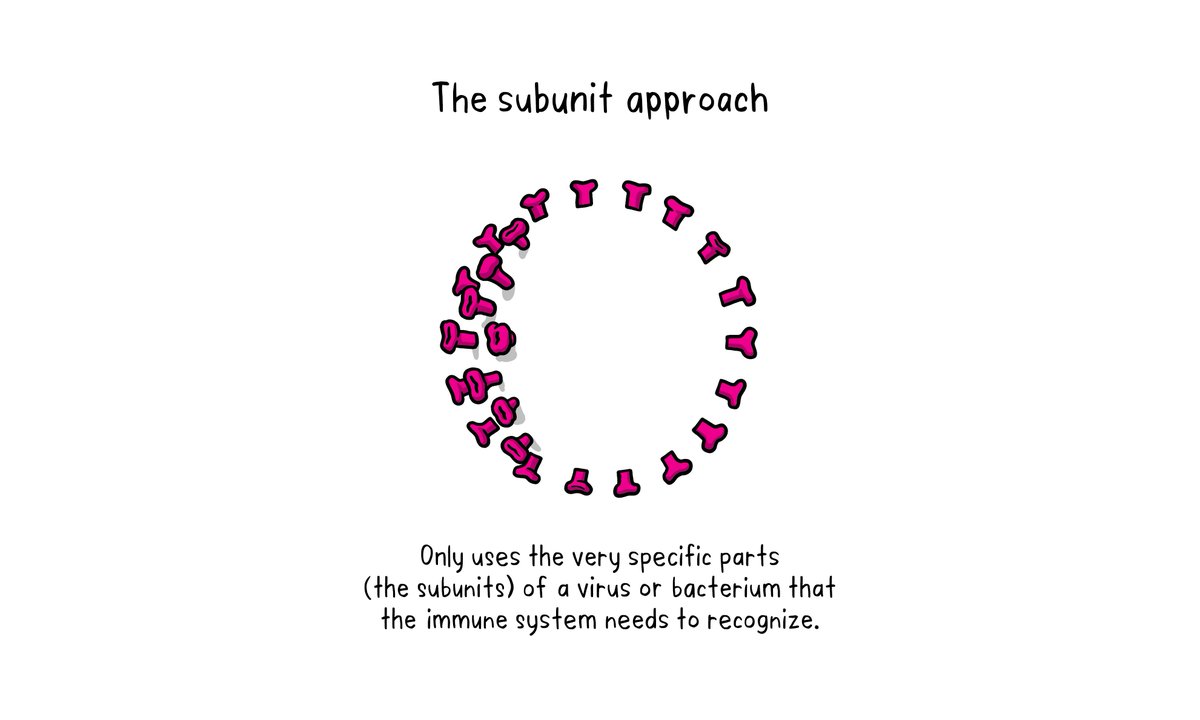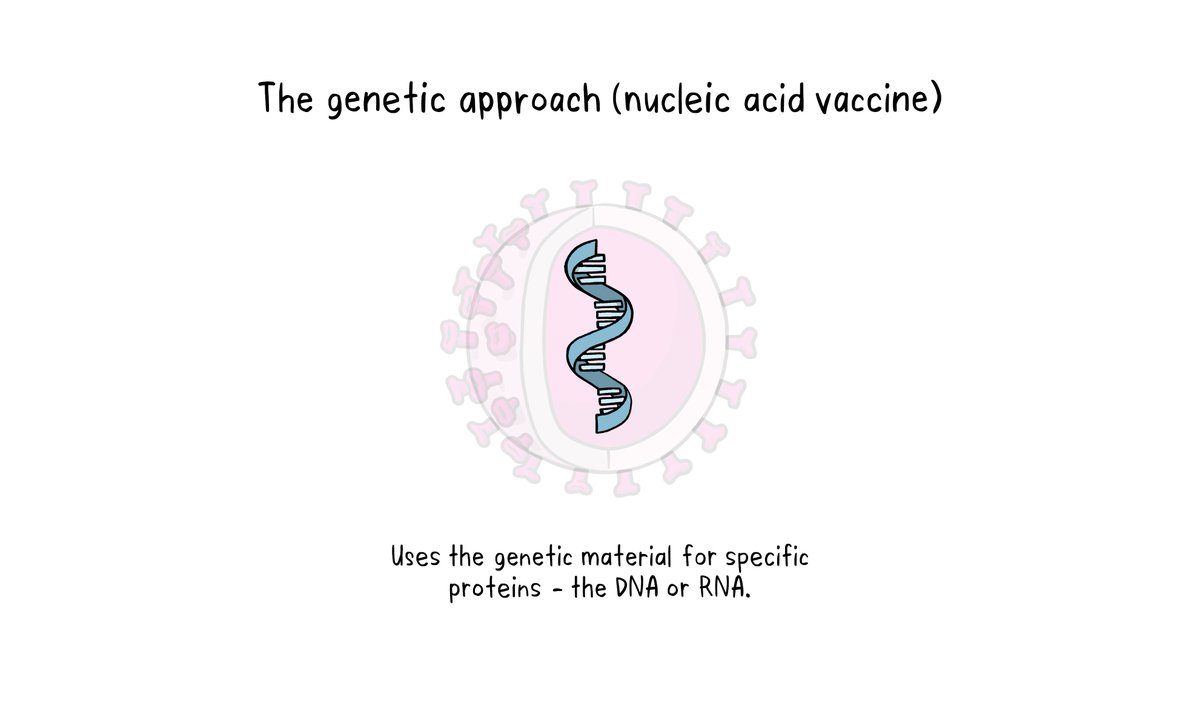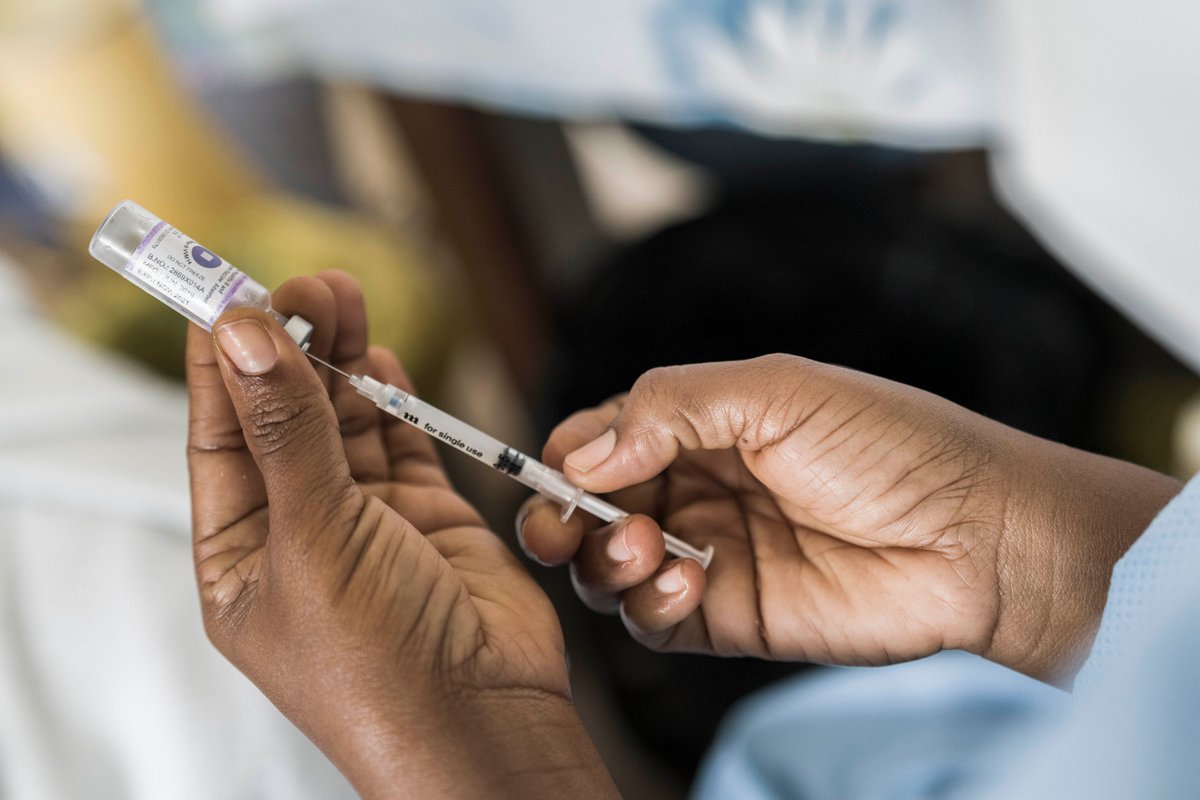Here are three main approaches to designing a #COVID19 vaccine:
 the whole-microbe approach
the whole-microbe approach
 the subunit approach
the subunit approach
 the genetic approach (nucleic acid vaccine)
the genetic approach (nucleic acid vaccine)
Learn more http://bit.ly/3caqsDW
http://bit.ly/3caqsDW
 the whole-microbe approach
the whole-microbe approach the subunit approach
the subunit approach the genetic approach (nucleic acid vaccine)
the genetic approach (nucleic acid vaccine)Learn more
 http://bit.ly/3caqsDW
http://bit.ly/3caqsDW
The whole-microbe approach uses a whole virus/bacterium to design a vaccine. It can be divided in 3 categories:
 Inactivated vaccine (how flu & #polio vaccines are made)
Inactivated vaccine (how flu & #polio vaccines are made)
 Live-attenuated vaccine
Live-attenuated vaccine
 Viral vector vaccine (how #Ebola vaccine is made)
Viral vector vaccine (how #Ebola vaccine is made)
 http://bit.ly/3caqsDW
http://bit.ly/3caqsDW
 Inactivated vaccine (how flu & #polio vaccines are made)
Inactivated vaccine (how flu & #polio vaccines are made) Live-attenuated vaccine
Live-attenuated vaccine Viral vector vaccine (how #Ebola vaccine is made)
Viral vector vaccine (how #Ebola vaccine is made) http://bit.ly/3caqsDW
http://bit.ly/3caqsDW
The subunit approach uses the parts of the germ (or microbe) that triggers the immune system.
Most of the vaccines on the childhood schedule are subunit vaccines. Learn more http://bit.ly/3caqsDW
http://bit.ly/3caqsDW
Most of the vaccines on the childhood schedule are subunit vaccines. Learn more
 http://bit.ly/3caqsDW
http://bit.ly/3caqsDW
The genetic approach (nucleic acid vaccine) uses a section of genetic material that provides the instructions for specific proteins, not the whole microbe.
Learn more http://bit.ly/3caqsDW
http://bit.ly/3caqsDW
Learn more
 http://bit.ly/3caqsDW
http://bit.ly/3caqsDW
A nucleic acid vaccine delivers a specific set of instructions to our cells, either as DNA or mRNA, for them to make the specific protein that we want our immune system to recognize and respond to.
Learn more http://bit.ly/3caqsDW https://twitter.com/WHO/status/1356208733769109505
http://bit.ly/3caqsDW https://twitter.com/WHO/status/1356208733769109505
Learn more
 http://bit.ly/3caqsDW https://twitter.com/WHO/status/1356208733769109505
http://bit.ly/3caqsDW https://twitter.com/WHO/status/1356208733769109505
Why are there so many vaccines in development
Typically, many vaccine candidates will be evaluated before any are found to be both safe & effective. Having lots of different vaccines in development increases the chances that there will be one or more successful vaccines.

Typically, many vaccine candidates will be evaluated before any are found to be both safe & effective. Having lots of different vaccines in development increases the chances that there will be one or more successful vaccines.
As of December 2020, there are over 

 vaccine candidates for #COVID19 being developed. Of these, at least
vaccine candidates for #COVID19 being developed. Of these, at least 
 candidate vaccines are in human trials and several others currently in phase I/II.
candidate vaccines are in human trials and several others currently in phase I/II.
More details http://bit.ly/3caqsDW https://twitter.com/WHO/status/1356238321274548225
http://bit.ly/3caqsDW https://twitter.com/WHO/status/1356238321274548225


 vaccine candidates for #COVID19 being developed. Of these, at least
vaccine candidates for #COVID19 being developed. Of these, at least 
 candidate vaccines are in human trials and several others currently in phase I/II.
candidate vaccines are in human trials and several others currently in phase I/II.More details
 http://bit.ly/3caqsDW https://twitter.com/WHO/status/1356238321274548225
http://bit.ly/3caqsDW https://twitter.com/WHO/status/1356238321274548225

 Read on Twitter
Read on Twitter